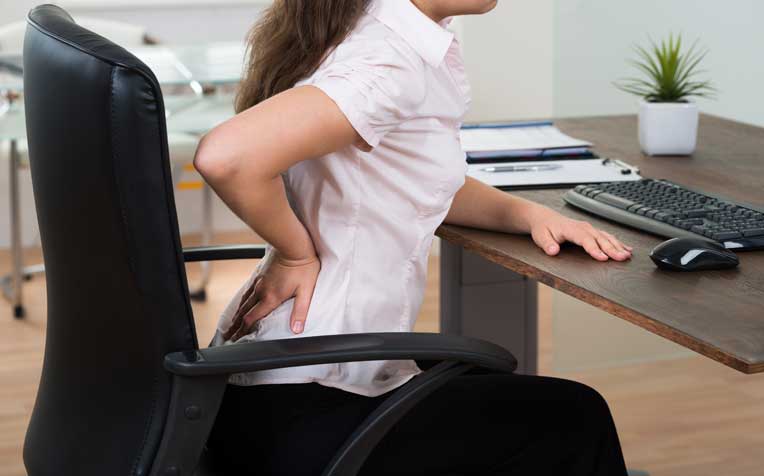
Poor posture and prolonged sedentary work are key factors of work-related musculoskeletal disorders (WMSD).
Causes of WMSD
Some of the possible causes of the high prevalence of aches and pains among office workers include both physical workload and the environment they work in. There are various factors that may affect these conditions.
A substantial amount of research has provided evidence of associations between musculoskeletal disorders and certain work-related factors such as vibration, posture, force and repetition. In an office environment, poor posture and the prolonged sedentary work seem to be the key factors," says Patrick Ter, Senior Principal Occupational Therapist from Occupational Therapy Department at Singapore General Hospital, a member of the SingHealth group. Poor design and layout of workstations can aggravate the awkward postures adopted by workers. Besides these physical factors, psycho-social factors such as job satisfaction and mental stress may influence the report of WMSD.
Shoulder elevation, trunk flexion, and low back not supported when using the laptop computer were some of the awkward postures adopted by office workers. Awkward postures, often aggravated by poorly designed workstations, can increase the risk of people getting WMSD which can be very painful and sometimes permanently disabling.
The disorder can interfere with all aspects of daily life. Sometimes even the simplest household chores, hobbies and social events can become unmanageable. Financial costs can also be severe. Employers can experience costs in a variety of ways such as lost time at work, medical treatment and disability cost.
Hence, it is important to have workstations that are well designed for the users and the intended tasks to be performed.
Workstation design
The main components of an office workstation include the desk, chair and the equipment used to perform the office task, often a computer. When designing a workstation, it is important that you consider the tasks that have to be performed, and the type of equipment used. Flexibility is the key in workstation design.
Posture and movement
The way the workstation is designed affects the posture that one adopts while working. Therefore, the workstation should be designed to place the person in the best position to enable him/her to perform the work in comfort. To assist us in designing offices that fit our local population, a Code of Practice for Office Ergonomics was published in November 2005.
Stretching exercises
Sitting for long periods can cause postural tension and muscle aches. Taking regular breaks can help to relieve strains and tension. Stretching should be performed slowly without bouncing or jerking movements. After initial stretching, the tension should begin to ease and you may gently increase the stretch.

Ref: Q15
Contributed by

















 Get it on Google Play
Get it on Google Play